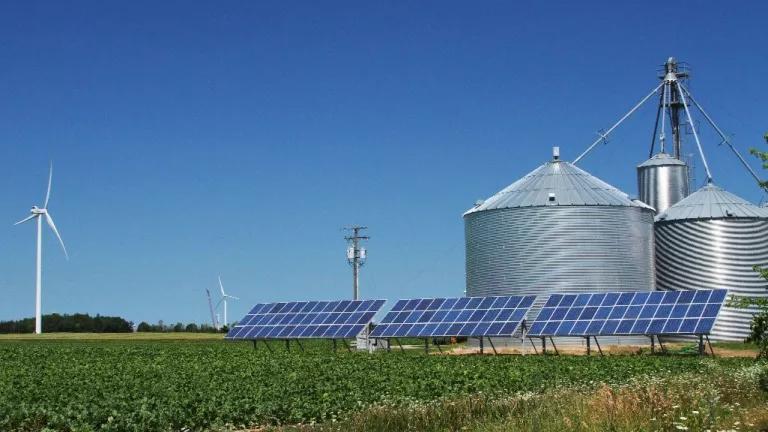I spend a lot of time talking publicly about what needs to happen to get biofuels right from an environmental perspective. One of my standard lines is that in the auto industry they joke that it's not the speed that kills you, it's the stopping, but for biofuels, it's the speed that gets you. My point is that agricultural and technological innovations are making ever greater amounts of biofuels possible, but if we push farmers to far too fast, the economics will drive them to practices that have disproportionate environmental impacts.
Since the early 70's, increased yields (bushels per acre) have allowed corn farmers to dramatically increase total corn production (from ~6.5 billion bushels in 1975 to about 12.5 billion last year) without any significant chance in acreage. These yield increases take time, though, and ethanol production capacity and demand is growing much faster than yields. This means farmers have only two options: increase the number of acres planted in corn and manage those acres more aggressively to maximize yields.
More acres can come from other crops but then the demand for those crops will drive at least some of those crops on to other land. In the end, increased demand for corn means increased pressure on virgin land and CRP--land put aside for conservation. Either way, the environmental impacts are higher than the impacts of increasing yield. And of course managing all these acres more aggressively also has higher impacts.
All in all, running up corn ethanol based production much faster than the historical rate of yield increases will almost certainly lead to increases in fertilizer, pesticide, and herbicide use and subsequent water pollution and soil erosion and these increases will be larger than the increases in land used for crops.
Two recent reports modeling the impacts of rapid increased ethanol production show this disproportionate impact. One of the studies is by USDA and looks at producing 15 and 20 billion gallons of ethanol from corn by 2016. USDA predicts that a 15 billion gallon increase in ethanol would lead to a 1.8% increase in nitrogen fertilizer applied, and a 20 billion gallon increase would lead to a 6.3% increase in nitrogen fertilizer applied. Pesticide applications would increase 1.3% and 4.4% under those scenarios, and soil erosion would increase 0.5% and 1.8%. In other words, a 33% larger amount of ethanol leads to impacts that are 3-4 times greater.
The second study builds on the same USDA model but has enhanced capabilities for looking at the environmental impacts and looks at a range of levels of corn ethanol production in 2008. This study is by Liz Marshall at the World Resource Institute and should be on their policy notes web page soon (http://www.wri.org/policynotes/), but until they get it up there, I have put a copy here. It has some great charts showing how fertilizer lost to water, soil erosion, and agricultural related greenhouse gas emissions all go up faster than land use for growing crops. In fact, the WRI analysis suggests push corn production too far too fast will drive up overall agricultural greenhouse gas emissions enough to roughly cut in half the modest climate benefits that corn ethanol on average provides today compared to gasoline.
Just as importantly, the WRI note provides the following great policy advice for minimizing these impacts:
FARM POLICY RECOMMENDATIONS
- 1. Resist the pressure to allow farmers penalty-free “early outs” from their CRP contracts.
2. Increase funding for working lands conservation programs such as CSP and EQIP.
3. Extend “sodbuster” compliance requirements for receipt of commodity payments to all acreage in production, not just highly erodible lands.
4. Create a pilot TMDL project for the Chesapeake Bay with joint USDA/EPA jurisdiction.
5. Extend compliance requirements for receipt of commodity payments to include nutrient management requirements in TMDL non-attainment watersheds.
6. Establish a new program in the Farm Bill to encourage riparian buffers.
7. Require all projects that receive federal funds to explore crop yield improvements to explicitly address the soil, water, and GHG implications of the new production methods.
8. Promote conservation tillage in corn production and provide research resources directed explicitly at use of slow-release fertilizers and use of precision nitrogen management in row crop production.
9. Task the USDA with development of a consistent methodology for calculating the environmental impacts of biofuels feedstock production.



